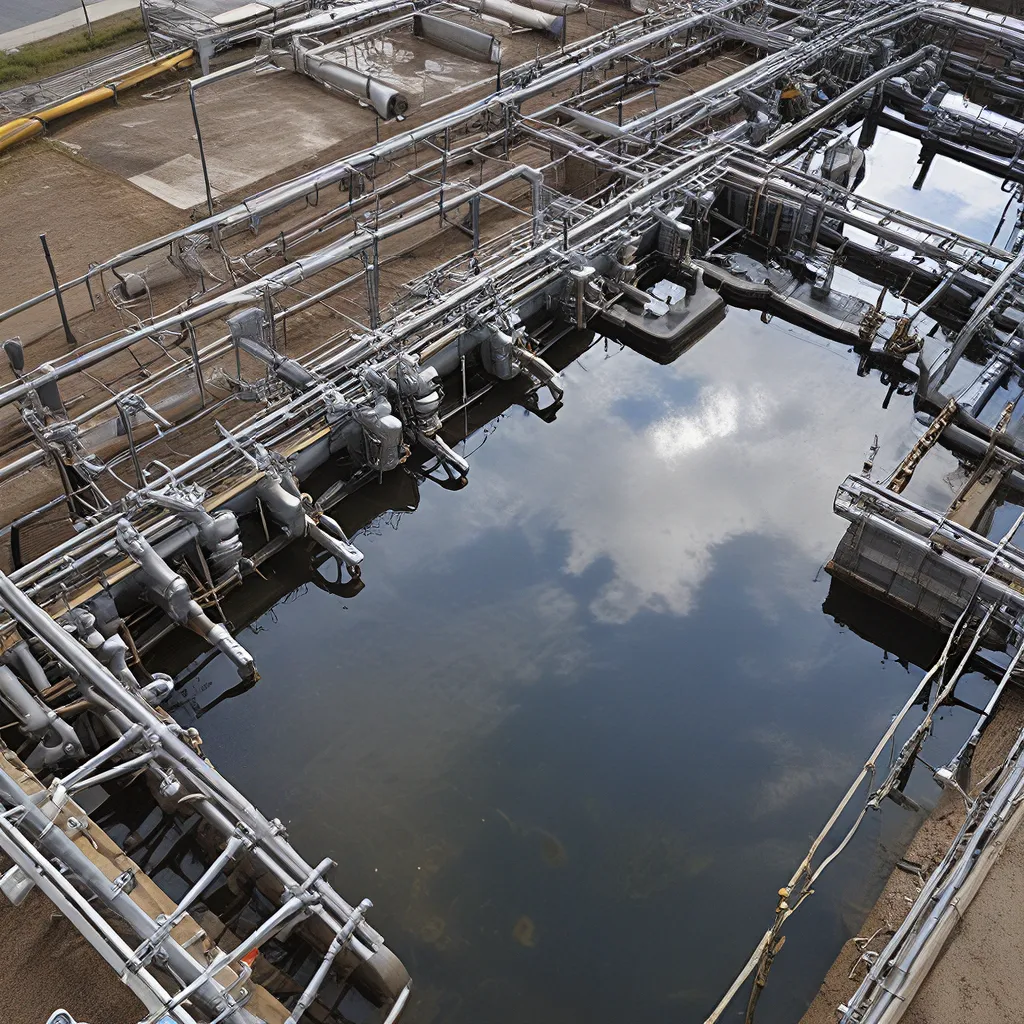
Ah, the wonders of wastewater bioprocessing! It’s a realm that might seem like a dull, murky world to the uninitiated, but let me tell you, it’s anything but. In fact, it’s a veritable goldmine of scientific intrigue, technological advancements, and environmental stewardship.
You see, I’ve always been fascinated by the complex and dynamic nature of wastewater treatment. It’s like a symphony, with each component playing a crucial role in harmonizing the overall process. From the bacteria that break down organic matter to the optical sensors that monitor the critical process parameters, it’s a delicate balance that requires a deep understanding of the underlying science.
But why should you care, you ask? Well, my friend, the implications of efficient wastewater bioprocessing are far-reaching. Imagine a world where we could revolutionize the biopharma industry, unlocking new therapies for rare and complex diseases. Or a future where we could produce commercially interesting amounts of recombinant proteins and amino acids for food supplements, all through the power of biotechnology.
And let’s not forget the environmental benefits. Properly treating our wastewater doesn’t just keep our rivers and oceans clean; it ensures the safety and efficacy of our biopharmaceutical products, safeguarding the health and well-being of our communities. It’s a win-win situation all around!
Decoding the Complexities of Wastewater Bioprocessing
Now, I know what you’re thinking – “This all sounds great, but how does it actually work?” Well, let me break it down for you.
At the heart of wastewater bioprocessing are the microorganisms, the unsung heroes of the process. These tiny creatures, often genetically modified, are tasked with the crucial job of breaking down the organic matter in the wastewater. Through a series of biochemical reactions, they transform the pollutants into less harmful substances that can be safely discharged or even recycled.
But it’s not just about the microbes; the equipment and technology used in the process play a vital role as well. From the optical sensors that monitor the dissolved oxygen levels to the bioreactors that provide the optimal conditions for the microbes to thrive, every component is carefully designed and integrated to ensure maximum efficiency.
And let me tell you, the level of precision required in this field is nothing short of astounding. Imagine trying to control the Carbon Dioxide levels in a bioreactor – it’s like trying to keep a room full of hyperactive toddlers in perfect harmony. But with the right advanced sensor technologies, it’s possible to achieve real-time control and maximize the productivity of the entire process.
The Biopharma Connection: Unlocking New Frontiers
But the exciting part is how wastewater bioprocessing is revolutionizing the biopharma industry. You see, the techniques and technologies used in this field have far-reaching applications beyond just water treatment. In fact, they’re being leveraged to produce recombinant proteins and even simple amino acids for food supplements.
Imagine a world where rare or complex diseases can be fought with therapies developed by the biopharma industry – a world that would be impossible without the advancements made in wastewater bioprocessing. It’s like a secret superpower that’s been hiding in plain sight all along!
And the best part? The research and development in this field is ongoing, with experts continuously exploring new ways to optimize efficiency, improve product quality, and ensure the safety and efficacy of these critical biopharmaceutical products. It’s an ever-evolving landscape, and I can’t wait to see what the future holds.
Sustainability and Environmental Stewardship
But let’s not forget the environmental impact of all this. After all, what’s the point of unlocking these amazing technological feats if we’re not doing our part to protect the planet?
That’s where the wastewater treatment industry comes in. By implementing robust and efficient bioprocessing techniques, we can not only keep our waterways clean but also ensure the safety and efficacy of the biopharmaceutical products that are so crucial to our health and well-being.
And the best part? It’s not just about the end result; it’s about the journey as well. The research and development happening in this field is constantly pushing the boundaries of what’s possible, exploring new and innovative ways to make the process even more sustainable and eco-friendly.
Embracing the Future of Wastewater Bioprocessing
So, here’s the deal – if you’re looking to take your wastewater treatment services to the next level, you’d be wise to keep a close eye on the cutting-edge advancements in this field. From real-time process monitoring to optimized efficiency and product quality, the possibilities are endless.
And who knows, maybe you’ll even stumble upon the next big breakthrough that could revolutionize the biopharma industry and change the world as we know it. Because that’s the beauty of wastewater bioprocessing – it’s a realm of endless possibilities, just waiting to be unlocked.
So, what are you waiting for? Dive in, my friend, and get ready to unlock the secrets of efficient wastewater bioprocessing. Trust me, it’ll be an adventure you won’t soon forget.